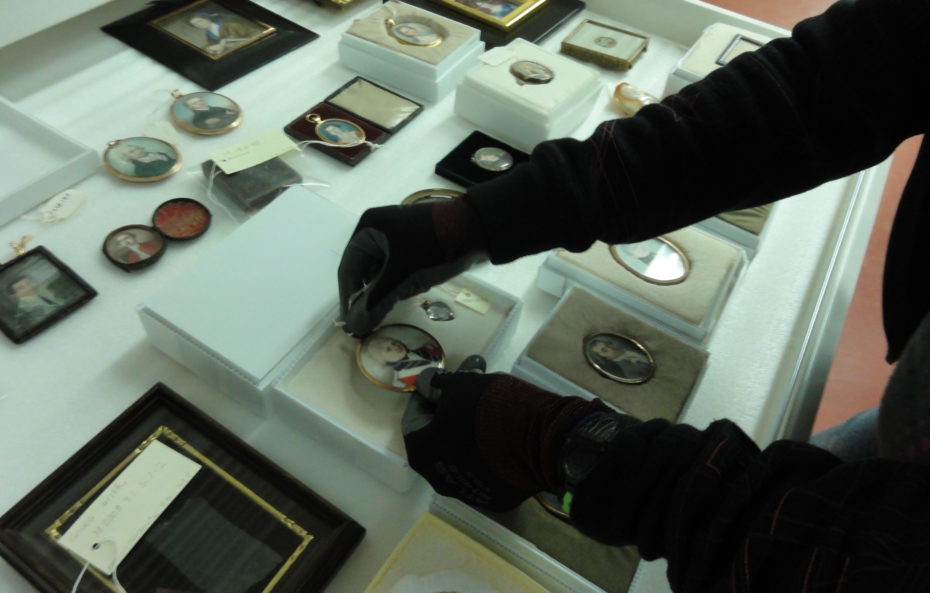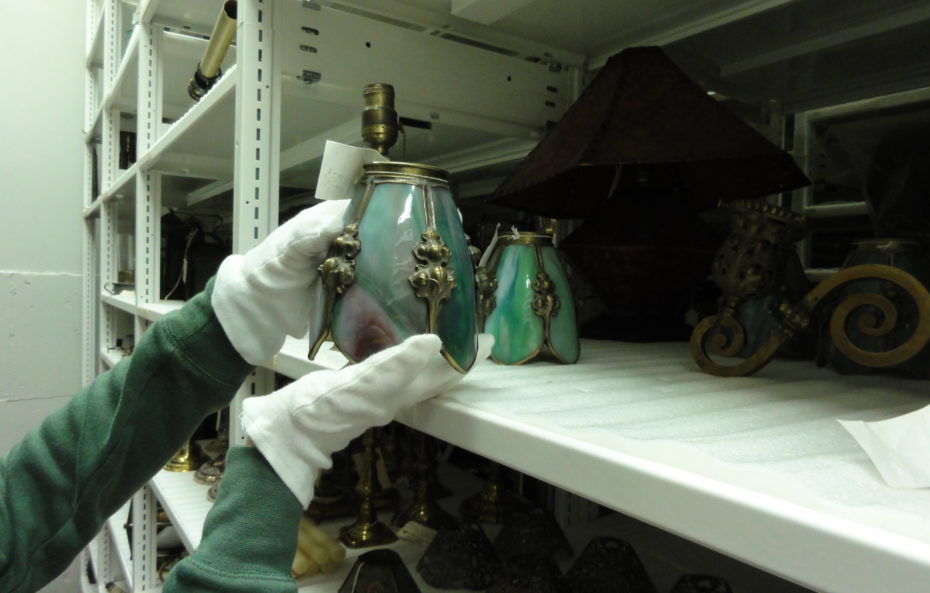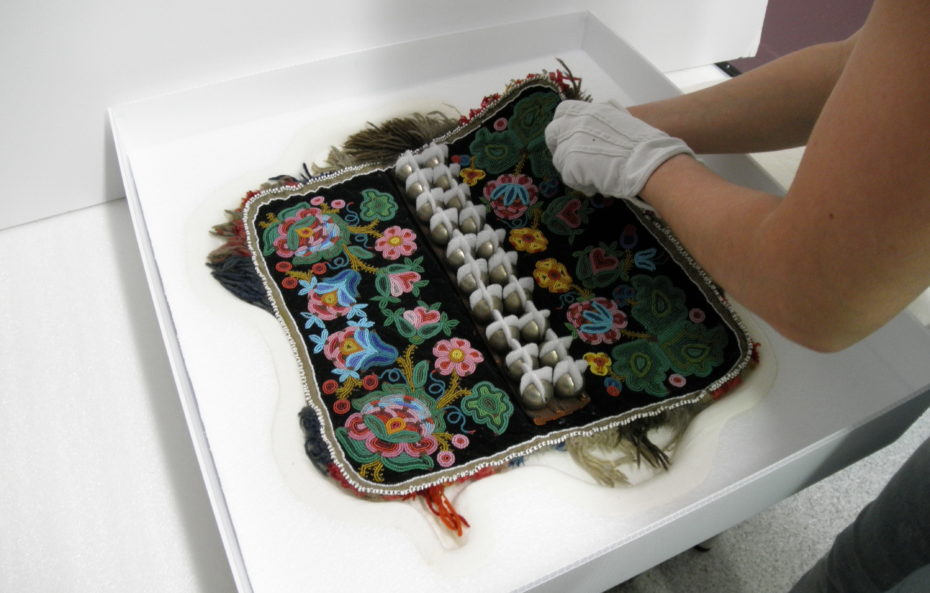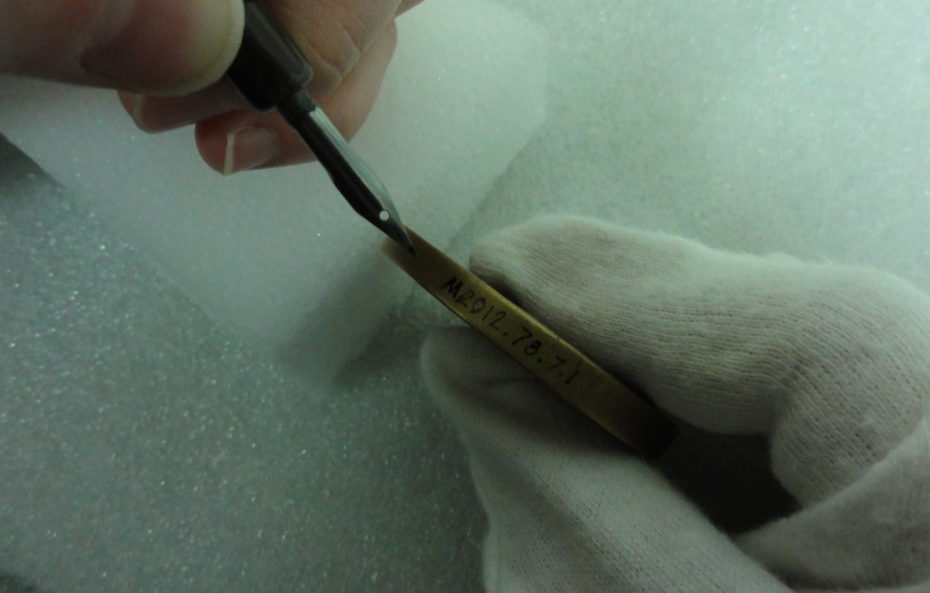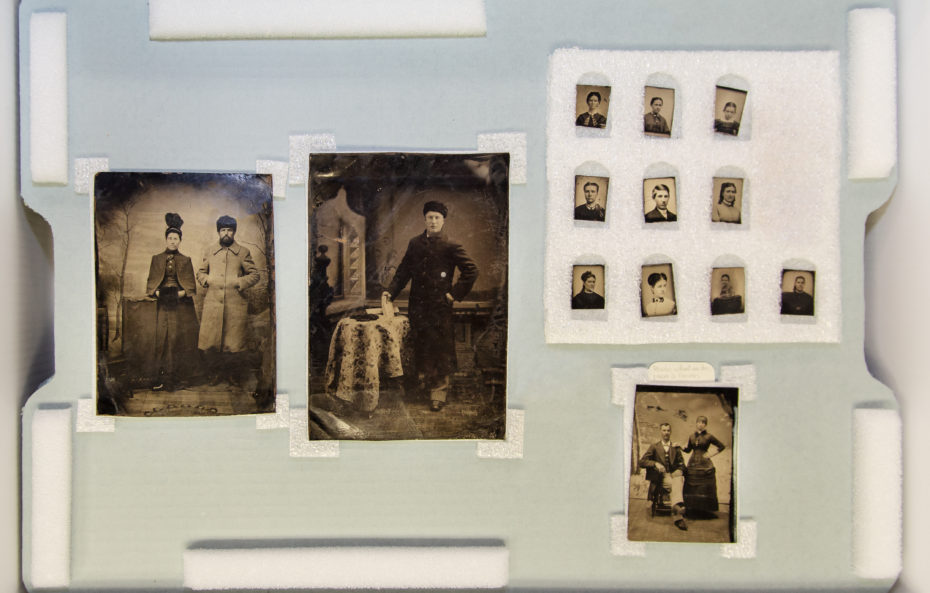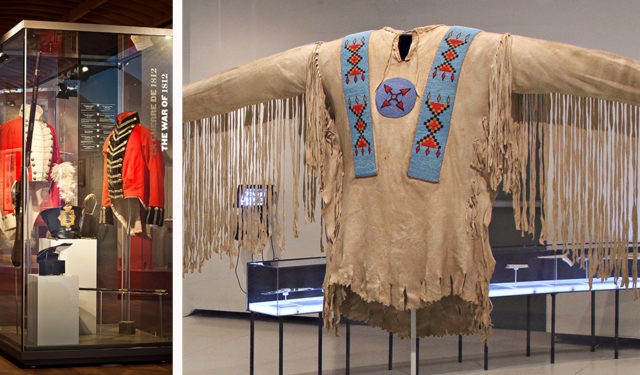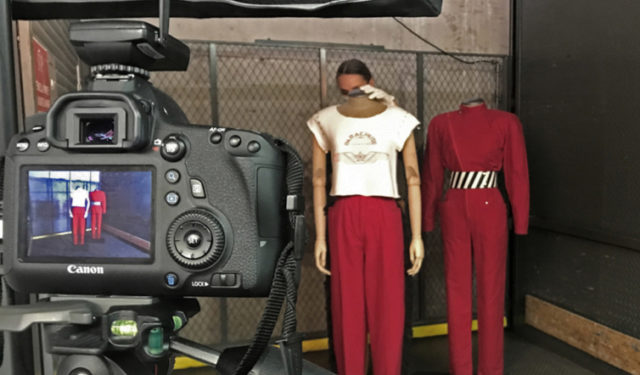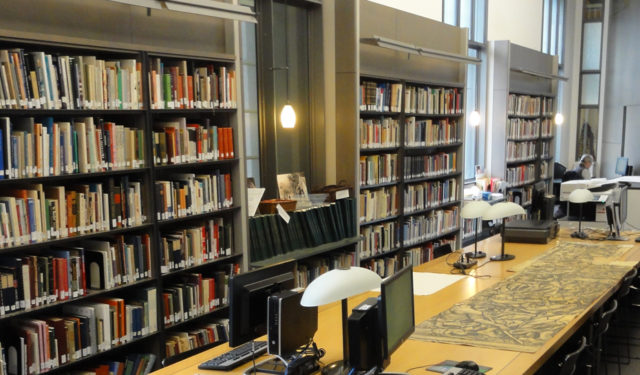Collections Management: An Essential Mechanism
The Collections Management team carefully tracks every object, from arrival at the Museum, to placement in storage, to a spot in a display case.
March 22, 2021
The McCord Museum’s collections contain over one million objects, documents and photographs. These artifacts are acquired, documented, moved, put into storage, located, digitized, boxed up, and more. Though vital to the Museum’s mission, these meticulous tasks go unnoticed by most people. Spending time with members of the collections management team, I discovered their work is wide-ranging, rigorous and engaging.
Karine Rousseau, Assistant Head, Collections Management, sums up her team’s mandate as follows: It is, above all, collaborative, operational work. Like gears in the heart of a machine, the team works with the Museum’s other departments—conservation, exhibitions and research. As Karine notes, I do a lot of coordinating. For example, I am the one who follows up on acquisitions and liaises with the exhibitions team.
The team’s work is both fundamental and multifaceted. When these specialists talk about the objects that make up the collections, I hear tremendous respect. I can just imagine them delicately placing an object on a shelf in the storage vault or wearing white gloves to examine old bound volumes.
The main purpose of cataloguing is to inventory and describe all the objects in the collection for the database. In such a large collection, it is easy to lose track of a new acquisition; that’s why cataloguing is so important, explains Geneviève Déziel, cataloguer at the Museum.
The work is a little like that of a librarian who, for instance, must ensure that the books are labelled, catalogued and placed in a precise location. In the case of cultural and historic objects, however, the task is much more complex because such items often have no name and sometimes have no known function. Such objects must be named with the help of a thesaurus, using multiple keywords to make them easier to find in the database.
Camille Deshaies-Forget is a collections management assistant. My job is very diverse, she says. Camille helps with cataloguing as well as following up on and coordinating acquisitions and loans. She explains that since each Museum team moves at a different pace, it can be challenging to work together.
For example, the exhibitions team is project-based with shorter deadlines, while the collections management team works methodically with a long-term approach.
Josianne Venne, a collections technician, is part of the team that handles the objects and puts them into storage. There is a special procedure to follow when acquiring or moving an object. When the Museum receives a proposed acquisition, it must first ensure that the object is not contaminated by sealing it in a plastic envelope. It must then make a stand so it can be placed in storage, find a suitable location in the vaults, etc. When an object is moved—to be catalogued, restored or photographed, for example—its new location must be indicated in the database. I am involved in just about everything that happens behind the scenes at the Museum! laughs Josianne.
As it turns out, a behind-the-scenes look at the Museum uncovers a hub of activity. It is the locus of a complex series of activities, procedures, standards and tasks focussed on preserving and providing access to a multitude of historic objects.


